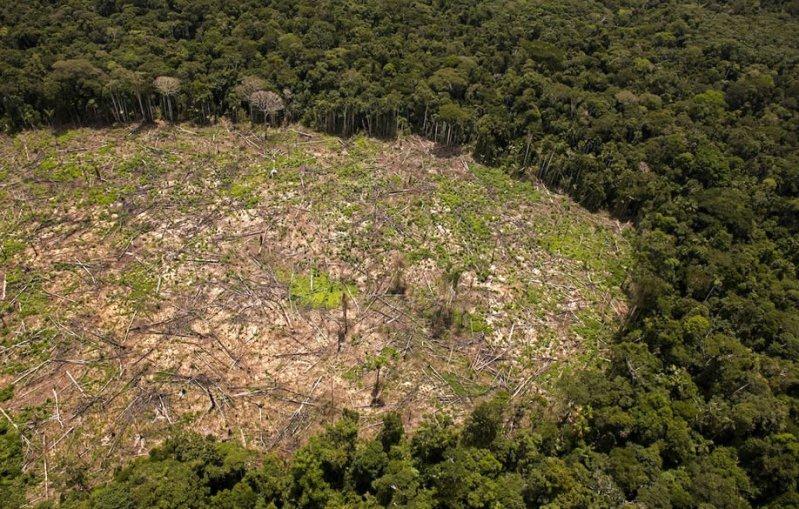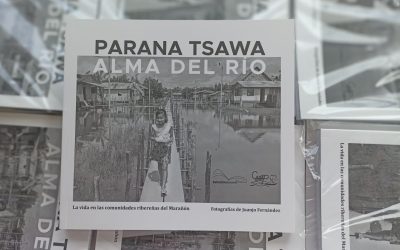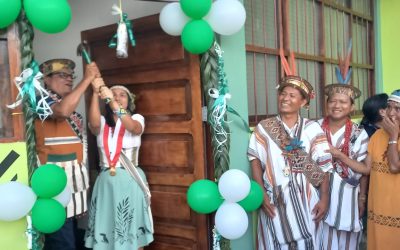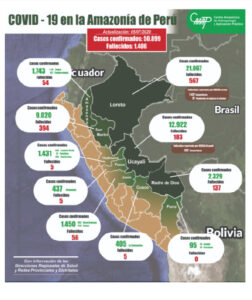By Cristina Sánchez
For several years, various national and international institutions have joined forces to conserve the Peruvian Amazon forests through a sustainable development approach. Therefore, some activities and meetings have taken place within the framework of the Joint Declaration of Intent (JDI). But what does this declaration include?
How it all started
With more than half of its territory covered by forests, Peru has the second largest Amazon extension in the world and one of the five largest, and best preserved biodiverse tropical forests on the planet. It is also estimated that the territory hosts more than 350 thousand individuals from indigenous peoples, including populations in isolation and uncontacted or initial contact ones.
However, all this diversity and tropical ecosystems, known as the Amazon, are at risk due to climate change, high deforestation rates and soil degradation. It is estimated that 118,000 hectares are deforested each year, which contributes to greenhouse gases (GHG) emission and, therefore, an increase in the planet’s temperature.
It is because of this that several initiatives are taking place to conserve the Amazon forests and achieve a sustainable development of the region. One of these initiatives is the established partnership between Norway, Germany and Peru which aims to significantly to reduce GHG emissions in the Peruvian Amazon.
It is important to point out that these countries participate in various conventions such as: the United Nations Framework Convention on Climate Change, the Kyoto Protocol, the Convention on Biological Diversity, the Convention on Indigenous and Tribal Peoples No. 169 of the International Labor Organization (ILO) and the United Nations Convention on the Elimination of all Forms of Discrimination, among others.
Thus, on September 22, 2014, during Climate Week in New York, the Government of the Kingdom of Norway, the Federal Government of Germany and the Government of the Republic of Peru pledged to fight climate change by signing a document called Joint Declaration of Intent (JDI).
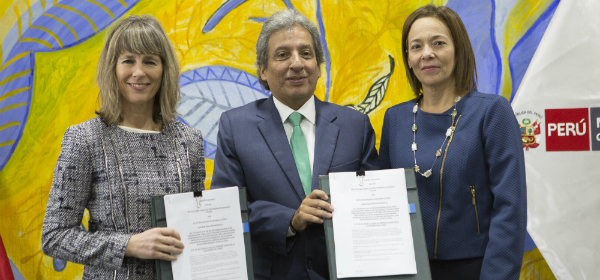
Firma del Acuerdo por parte del Ministro del Ambiente, Manuel Pulgar-Vidal; la Embajadora del Reino de Noruega, Hege Araldsen; y la Representante Residente del PNUD en el Perú, María del Carmen Sacasa. Foto: Minam
From Good Intentions to Deeds
«We will move from good intentions to deeds» is one among many statements the signatories made because, to date, the commitments in most international conventions had not been backed by concrete actions.
The document envisages respecting the rights and purposes of indigenous communities by increasing to 5 million hectares the areas entitled to them. Also, to include at least 2 million hectares as way of payment for the conservation efforts. This is why, a large part of the donation is aimed at facilitating the titling of indigenous communities’ territories in the San Martin and Ucayali regions.
This paper also sealed the direct involvement of the Peruvian State to collaborate with the implementation of projects related to REDD+ and the sustainable development of the Amazon. All this, through its Forest Program and the Servicio Nacional Forestal y de Fauna Silvestre – SERFOR (National Forest and Wildlife Service).
The JDI
The Joint Declaration of Intent is primarily aimed at contributing to significantly reduce greenhouse gases emissions in Peru, to help achieve the goal of zero net emissions derived from the land use category, to change the land and forests use in Peru by 2021 and also contributing to the national goal of reducing deforestation by 50 percent by 2017; and finally, to aid sustainable development in agriculture, forestry sectors and environmentally sound mining in Peru.
To achieve this, the project has been divided into 3 phases:

In regard to the participation of the signatory countries, Norway will be in charge of financing the project. It has been established that the contribution will be USD 300 million from which only USD 50 million can be used during Phase 1 and 2. Thus, it is established that the remaining USD 250 million will be for Phase 3 which represents the contributions for verified emission reductions.
It is worth to mention, that such contributions are subject to the Peruvian government meeting the objectives of Phases 1 and 2. If so, said money would be delivered in the Phase 3 period, which runs from 2017 to 2020.
Meanwhile, Germany is currently developing cooperation with Peru concerning climate, forestry and rural development issues. Nonetheless, this country might join as a financing entity in the future.
Finally, this commitment also includes the participation of the Inter-American Development Bank (IDB) who provides technical assistance in regards to developing a suitable fiduciary and financial mechanism, aligning and ensuring consistency when implementing the document and supporting the creation of a coordination platform among the agencies working on REDD+ in Peru and the international community.
What’s next?
The first phase, preparation, developed since 2014 and, as seen in the chart above, has focused on preparing the groundwork for a successful implementation of the next phases of the JDI.
The project is currently in the second phase, transformation, and while already some activities were carried out, the Peruvian Government and the Forest program still face a major challenge: to design the matrix and indicators of this phase.
Therefore, meetings have been held in the past few weeks with various stakeholders such as the civil society, the private sector and indigenous organizations. This aims to include their suggestions in the matrix. In this phase there is an expectation to revert some actions that do not contribute to forest conservation and to set the stage for implementing safeguards.
Once this phase is accomplished, the third phase is expected to be implemented starting in 2017, granting financial contributions until 2021. It is clear that to reach this stage, it is necessary to achieve synergy among the stakeholders and transform the environmental reality of the Peruvian Amazon region.
—
Traducción al inglés realizada por Natalia León.
_______________________________________________________________
Fuente: Servindi
